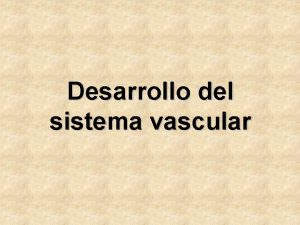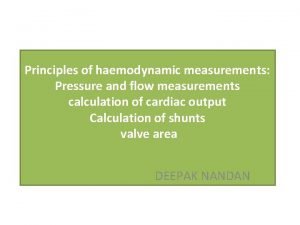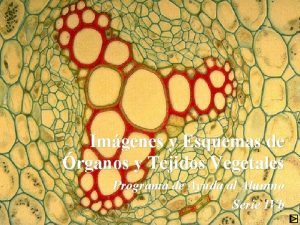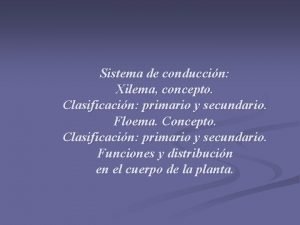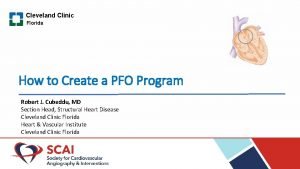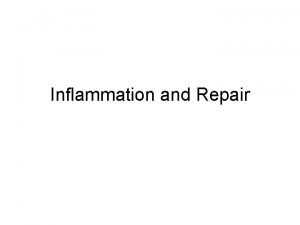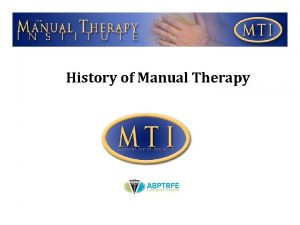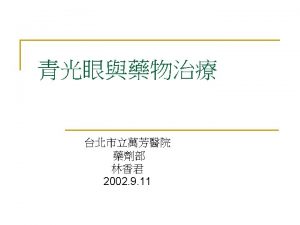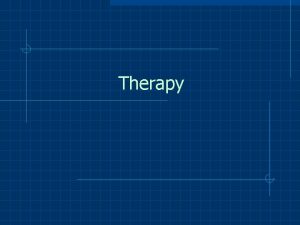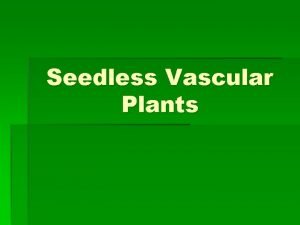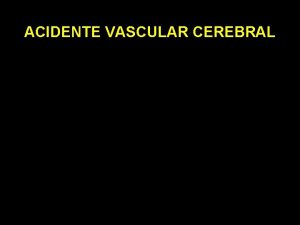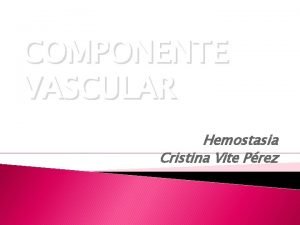IV Therapy Vema Sweitzer MN RN 1 Vascular























- Slides: 23

IV Therapy Vema Sweitzer, MN, RN 1

Vascular Access Devices (VADs) • Peripheral catheters: short term use (after surgery or a procedure) 2

Vascular Access Devices (VADs) • Central Catheters: long-term use (chemo therapy, PN) • More effective than peripheral catheters for administering large volumes of fluid, PN and medications 3

IV Therapy: Implanted Ports

Vascular Access Devices (VADs) • Central Catheters: long-term use (chemo therapy, PN) • PICC: Peripherally inserted central catheters 5

IV Therapy: Peripheral Sites Feet not recommended for adults

IV Therapy: Starting an IV • Review order • Get supplies • Explain to patient • Find best vein • Start distally • Perform venipuncture, secure, start fluids • Document • Dressing should be transparent

Complications of Intravenous Therapy

Circulatory overload • Caused by infusing excessive amounts of isotonic or hypertonic crystalloid solutions to rapidly, failure to monitor the IV infusion or too rapid infusion of any fluid in a patient compromised by cardiopulmonary or renal disease

Circulatory Overload

Circulatory Overload • NI/Treatment • Plan ahead if patient is to receive a lot of fluid • Stop the fluids and contact the HCP immediately for new orders. • Continue to monitor the patient and anticipate doctor’s orders: • Oxygen • Diuretics

Infiltration • Occurs with IV becomes dislodged or a vein ruptures and IV fluids enter subcutaneous tissue • Nursing Assessment:

Infiltration NI/Treatment Prevention • Remove the IV catheter • Apply warm soaks to aid in absorption (check hospital’s policy) • Elevate the limb • Notify the HCP if severe • Assess circulation • Restart the infusion in the other arm • Document the patient’s condition and your interventions • Check the IV site frequently • Don’t obscure area above site with tape • Teach the patient to report discomfort, pain swelling

Documentation Infiltration Scale

Extravasation • The inadvertent administration of a vesicant solution into surrounding tissue • Signs/symptoms

Extravasation NI/Treatment • Immediately stop the infusion and remove the device • Elevate the affected limb • Apply cold compress to decrease edema and pain • Apply moist heat to facilitate the absorption of fluid at grossly infiltrated site Prevention • Check the IV site frequently • Don’t obscure area above site with tape • Teach the patient to report discomfort, pain swelling • Drugs that can cause Necrosis • Calcium chloride • Calcium gluconate • Vancomycin • Cancer Chemotherapy drugs

Phlebitis • An inflammation of the vein in which the endothelia cells of the venous wall become irritated and cells roughen, allowing platelets to adhere and predispose the vein to inflammationinduced phlebitis • Causes • Injury during venipuncture • Prolonged use of the same IV site • Irritation/incompatible IV additives • Use of vein that is too small for the flow rate • Use of needle size too large for the vein size

Phlebitis Signs/symptoms: NI/Treatment • Upon assessment of phlebitis, remove the needle • Avoid multiple insertion attempts • Application of warm compress • Continuously monitor the patient’s vital signs

Documentation Phlebitis Scale

Local Infection • Caused by poor aseptic technique during catheter insertion • Signs/symptoms

Hematoma at the IV Site • Hematoma: formations resulting from the infiltration of blood into the tissues at the venipuncture site • Causes: nicking the vein during an unsuccessful venipuncture attempt, discontinuing the I. V. cannula or needle without pressure, applying a tourniquet too tightly above a previously attempted venipuncture site

Hematoma at the IV Site • Signs/symptoms: • Discoloration • Site swelling and discomfort • Prevention and treatment

Blood Seepage into the Extravascular Tissue • Causes • Coagulation defects • Inappropriate use of tourniquet • Unsuccessful insertion attempts • Little pressure upon removal of IV catheter
 Vema church
Vema church Vascular and non vascular difference
Vascular and non vascular difference Vascular plants vs nonvascular plants
Vascular plants vs nonvascular plants Anthiridium
Anthiridium Psychoanalytic therapy is to as humanistic therapy is to
Psychoanalytic therapy is to as humanistic therapy is to Both psychoanalysis and humanistic therapy stress
Both psychoanalysis and humanistic therapy stress Bioness integrated therapy system occupational therapy
Bioness integrated therapy system occupational therapy Fase vascular
Fase vascular Microphyll vs megaphyll
Microphyll vs megaphyll Desarrollo vascular
Desarrollo vascular Coniferophyta vascular or nonvascular
Coniferophyta vascular or nonvascular Endotelio vascular
Endotelio vascular How to calculate systemic vascular resistance
How to calculate systemic vascular resistance Parenquima vascular
Parenquima vascular Chapter 8
Chapter 8 Floema
Floema Bryant üçgeni
Bryant üçgeni Primary growth and secondary growth in plants
Primary growth and secondary growth in plants Heart and vascular institute
Heart and vascular institute Nonvascular plant
Nonvascular plant Which seedless plants have been used to treat burns
Which seedless plants have been used to treat burns Anteromedial surface of parotid gland
Anteromedial surface of parotid gland Blood supply of long bone
Blood supply of long bone Vascular space
Vascular space









